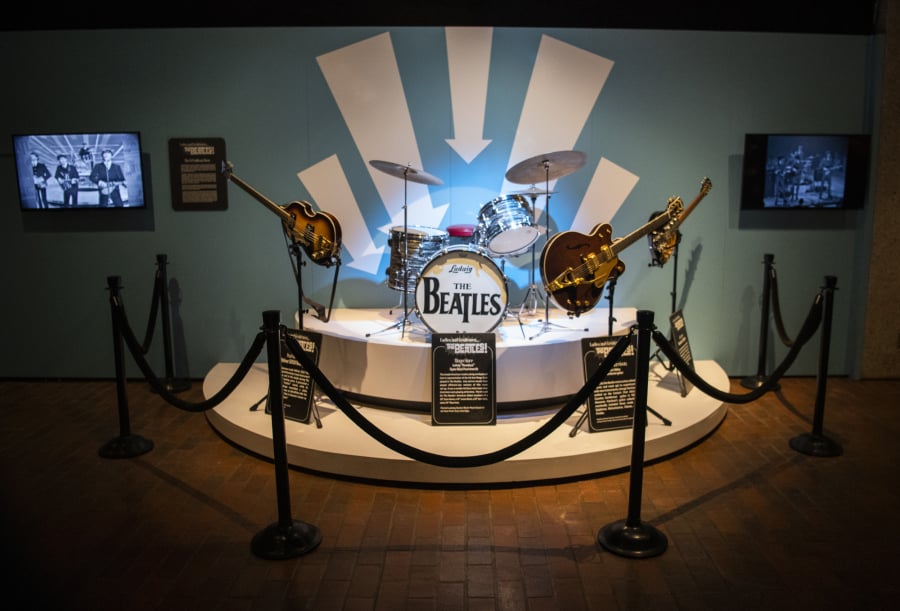“As they matured, so did I,” said Jill Hibbs, visiting from Oregon City, Ore.
“I’m going to have to go back and listen again,” said Joan Smith of Portland, a married mom who couldn’t afford to buy records in those days — but who vividly remembers dancing with her children when The Beatles rocked her radio. “The Beatles are deep in my soul,” she said.
Jackets and contracts
Some of the artifacts in this exhibit are large as life and instantly recognizable. A stage set of the band’s guitars and drums is arranged in proper iconic fashion, with George and John’s electric six-strings pointed this way, left-handed Paul’s violin bass pointed that way, Ringo’s shiny, miniature Ludwig drum kit behind. See the tan jacket (complete with sheriff’s star) that Paul wore at the record-setting Shea Stadium concert as well as at the Portland show, and the black jacket sported by Ringo while ambling across Abbey Road for that famous album cover. (The exhibit provides an Abbey Road backdrop for you to amble across too, while your bandmates snap photos.)
Other artifacts are easy to miss, unless you squint. Hidden among the many autograph cards, newspaper stories, concert programs and gold records are a few song lists that were hand-scrawled by different Beatles and affixed to the edges of their guitars for quick reference. (Also here, in Paul’s hand on Atlantic City hotel stationery, is a draft of lyrics for a real non-hit, “What You’re Doing.” Remember that one? Didn’t think so.)
The exhibit even features a grab bag of artifacts from the Beatles’ own heroes and influences, including a guitar played by blues master B.B. King and, amazingly, the 1959 death certificate for Buddy Holly.




